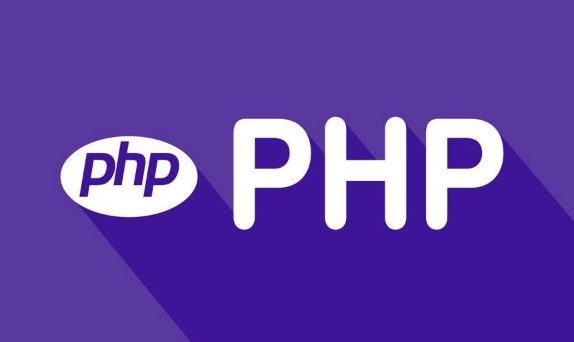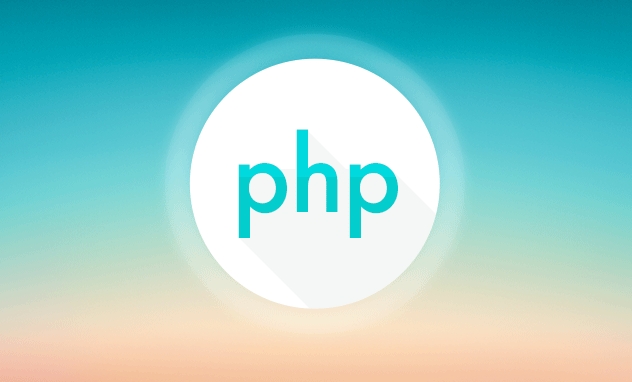How to use PHP Composer for dependency management?
Jul 13, 2025 am 02:00 AMComposer solves many problems with PHP dependency management. 1. Install Composer: Windows users use graphical installer, Linux/macOS users download and move to the system path through commands; 2. Initialize the project: Run composer init to create composer.json file; 3. Add dependencies: manually edit the file or use the composer require command to install the package; 4. Automatic loading: Introduce vendor/autoload.php to automatically load the class library, and custom classes can be automatically loaded by configuring the autoload field; 5. Update and unload dependencies: Use composer update and composer remove commands respectively.

PHP's dependency management was once a troublesome thing, manually downloading, introducing class libraries, and processing automatically loading, which is inefficient and prone to errors. After Composer appeared, these problems were basically solved. It has become the de facto standard tool in PHP projects.

Install Composer
Composer itself is a command line tool, and the installation method varies slightly on different systems.
- Windows users : It is recommended to use the official graphical installer ( getcomposer.org ), which will automatically configure environment variables.
- Linux/macOS user : You can install it using the following command:
php -r "copy('http://www.miracleart.cn/link/521eae94653641ec7be496db736ce3f6installer', 'composer-setup.php');" php composer-setup.php php -r "unlink('composer-setup.php');" sudo mv composer.phar /usr/local/bin/composer
After the installation is completed, enter composer --version to see if the version number is displayed and confirm whether the installation is successful.

Initialize the project and add dependencies
After entering your project directory, run:
composer init
This command will guide you to create a composer.json file that records the meta information and dependencies of the project.

There are two ways to add dependencies:
- Manually edit the
composer.jsonfile and write the required package name and version; - Use the command to install the package directly:
composer requires vendor/package
For example:
composer requires monolog/monolog
After execution, Composer will automatically download the package and its dependencies to vendor/ directory, and generate the automatic loading file vendor/autoload.php . You only need to introduce this file in your code to use these class libraries directly.
Automatic loading and optimization
Composer not only helps you manage dependencies, but also automatically generates automatic loading mechanisms for classes.
By default, all class libraries installed through Composer can be loaded correctly as long as you use require 'vendor/autoload.php';
If you write the class yourself, you can also modify composer.json to automatically load:
"autoload": {
"psr-4": {
"MyApp\\": "src/"
}
} The above means: all classes under the namespace MyApp\ are placed in src/ directory. After configuration, run:
composer dump-autoload
In this way, the classes you write can also be automatically loaded like third-party libraries.
In the production environment, you can also add a -o parameter to optimize the loading speed:
composer dump-autoload -o
Update and uninstall dependencies
Update dependencies are simple, you can use:
composer update
This will upgrade all dependencies to the latest compatible version according to the version rules defined in composer.json .
If you want to update only a certain package:
composer update vendor/package
It is also convenient to uninstall a dependency:
composer remove vendor/package
Composer will automatically clean up related files and configurations.
Basically that's it. Composer is not complicated to use, but many newbies tend to get stuck in installation or automatic loading issues at the beginning. As long as you pay attention to the correspondence between paths and namespaces, most problems can be solved.
The above is the detailed content of How to use PHP Composer for dependency management?. For more information, please follow other related articles on the PHP Chinese website!

Hot AI Tools

Undress AI Tool
Undress images for free

Undresser.AI Undress
AI-powered app for creating realistic nude photos

AI Clothes Remover
Online AI tool for removing clothes from photos.

Clothoff.io
AI clothes remover

Video Face Swap
Swap faces in any video effortlessly with our completely free AI face swap tool!

Hot Article

Hot Tools

Notepad++7.3.1
Easy-to-use and free code editor

SublimeText3 Chinese version
Chinese version, very easy to use

Zend Studio 13.0.1
Powerful PHP integrated development environment

Dreamweaver CS6
Visual web development tools

SublimeText3 Mac version
God-level code editing software (SublimeText3)

Hot Topics
 Guide to setting up Maven local libraries: efficiently manage project dependencies
Feb 19, 2024 am 11:47 AM
Guide to setting up Maven local libraries: efficiently manage project dependencies
Feb 19, 2024 am 11:47 AM
Maven local warehouse configuration guide: Easily manage project dependencies. With the development of software development, project dependency package management has become more and more important. As an excellent build tool and dependency management tool, Maven plays a vital role in the project development process. Maven will download project dependencies from the central warehouse by default, but sometimes we need to save some specific dependency packages to the local warehouse for offline use or to avoid network instability. This article will introduce how to configure Maven local warehouse for easy management
 How to manage dependencies of C++ code?
Nov 04, 2023 pm 03:45 PM
How to manage dependencies of C++ code?
Nov 04, 2023 pm 03:45 PM
How to manage dependencies in C++ code? As a widely used programming language, C++ is often used to develop applications involving underlying hardware, system level, or high-performance requirements. In actual development, C++ projects often involve various libraries, frameworks and other dependencies. Therefore, code dependency management becomes particularly important. This article will introduce several common C++ code dependency management methods to help developers better manage dependencies in projects. 1. Manually copy dependent libraries. The simplest dependency management method is to manually copy the required
 Composer's Purpose: Managing Project Dependencies in PHP
Apr 30, 2025 am 12:01 AM
Composer's Purpose: Managing Project Dependencies in PHP
Apr 30, 2025 am 12:01 AM
We need Composer because it can effectively manage dependencies of PHP projects and avoid the hassle of version conflicts and manual library management. Composer declares dependencies through composer.json and uses composer.lock to ensure the version consistency, simplifying the dependency management process and improving project stability and development efficiency.
 * Java package management and dependencies: how to keep your code base clean and maintainable
Apr 24, 2024 pm 02:33 PM
* Java package management and dependencies: how to keep your code base clean and maintainable
Apr 24, 2024 pm 02:33 PM
Question: How to manage Java function packages and dependencies? Answer: Use a package manager such as Maven or Gradle to declare dependencies. Specify the coordinates and scope of the dependency in the pom.xml or build.gradle file. Build the project using Maven or Gradle commands to resolve and manage dependencies.
 What is Composer and how is it related to PHP?
May 12, 2023 pm 08:31 PM
What is Composer and how is it related to PHP?
May 12, 2023 pm 08:31 PM
With the rapid development of modern web development technology, dependency management has become an increasingly important issue. Whether it is front-end or back-end development, we need to introduce a variety of libraries and frameworks to achieve higher development efficiency and better application performance. The organization, version control and installation management of these libraries and frameworks have become a difficult problem worth thinking about and solving. Composer is an open source tool launched to solve dependency management problems in PHP application development. It works similar to Node.js
 What are the common dependency management issues in the Golang framework?
Jun 05, 2024 pm 07:27 PM
What are the common dependency management issues in the Golang framework?
Jun 05, 2024 pm 07:27 PM
Common problems and solutions in Go framework dependency management: Dependency conflicts: Use dependency management tools, specify the accepted version range, and check for dependency conflicts. Vendor lock-in: Resolved by code duplication, GoModulesV2 file locking, or regular cleaning of the vendor directory. Security vulnerabilities: Use security auditing tools, choose reputable providers, monitor security bulletins and keep dependencies updated.
 Maven Dugu Nine Swords: Java construction has no tricks to win
Mar 08, 2024 pm 01:20 PM
Maven Dugu Nine Swords: Java construction has no tricks to win
Mar 08, 2024 pm 01:20 PM
1. Maven's core idea is to follow conventions rather than configurations. It provides a set of default rules to guide the project construction process, and developers only need to make minor customizations based on specific needs. This strategy of winning without any tricks gives Maven extremely high flexibility, making it suitable for various Java projects. 2. Project structure convention Maven has strict conventions on project structure, including directory organization and file naming rules. The project root directory generally contains the following subdirectories: src/main/java: stores source code src/main/resources: stores resource files src/test/java: stores test code src/test/resources: stores
 Analysis of Maven's core functions and features: Explore Maven's five major functions
Jan 28, 2024 am 08:44 AM
Analysis of Maven's core functions and features: Explore Maven's five major functions
Jan 28, 2024 am 08:44 AM
Maven is a Java-based build automation tool that is widely used for building, dependency management, and project management of software projects. It defines the structure and dependencies of the project by using a unified build description file (pom.xml). Maven has many functions and features. This article will introduce the five core functions of Maven. Dependency management: Maven helps developers manage project dependencies, simplifying dependency management on third-party libraries during the build process. By declaring dependencies in pom.xml file and their






